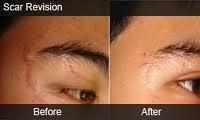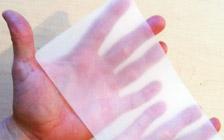Scars and scar formation are some of the most commonly misunderstood medical concepts. If a person undergoes surgery, for cosmetic reasons or otherwise, having a scar is one of the things they should expect. Most patients assume if the operation was performed by a plastic surgeon, there won’t be any scarring. Scars always form but some surgeons are better than others at hiding them.
Scarring is the body’s way of healing itself after an injury. In fact, it is the final phase of the body’s wound healing process. A scar is a direct result of damage from accidents, burns, skin conditions, surgery and trauma. Something as simple as having piercings in your body can cause scars to form.
The body’s wound healing process comes in multiple stages. The first phase involves the sealing of the wound by blood clots to prevent further blood loss and infection. This is followed by a series of events that lead to the formation of collagen to actually repair and fully heal the wound. Wounds that are left to heal on their own produce scars that are a bit worse than those which are closed through stitches. It can take at least a year for a scar to completely heal. Once healed, a scar may appear as a fine line that is minimally visible or as a thick scar like hypertrophic scars and keloids.
Scars are treated using various methods. The choice of treatment depends on how thick and big the scar is. Small and soft scars are best managed by massaging them with moisturizer once or twice a day for a few minutes. The moisturizer should contain ingredients like vitamin E and cocoa butter for maximum results. Sun exposure must also be avoided as much as possible to keep the scars from turning dark. On the other hand, thicker and more extensive scars such as hypertrophic scars, keloids and burn scars can heal properly by using silicone gel sheets.
In recent years, steroids have also been prescribed as a treatment for scaring. Topical steroids alone, or in combination with other scar treatment products, have been proven to improve scar formation in some patients. Steroids administered through injections are said to be effective on hypertrophic scars and keloids. A series of injections is required when using steroids in intervals ranging from six to eight weeks. The most common side effect of injected steroids is the formation of a dent on the site where it is administered. Steroids may be combined with surgical excision especially in cases involving keloids. This combination treatment is usually effective although there is still a possibility for recurrence.
If the treatments listed above fail to produce any response, the patient may try a less common treatment option like radiation therapy. Stubborn keloids respond well to low-dose radiation following surgical treatment. Radiation therapy does raise some concerns due to the risk of long-term complications. Laser treatment is another option but the results vary and some patients find using lasers to be an ineffective treatment.
Scarring should be expected by a patient no matter what type of plastic surgery procedure they are having performed. The key to effectively managing the lasting effects of a scar is knowing how to treat and minimize the long-term effects of any scar formations.




